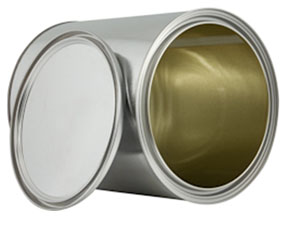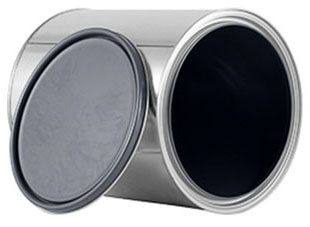Statement of Issue:
The International Association of Arson Investigators has recently been advised of critical issues involving evidence cans lined with a new "FDA Gold Epoxy." This gold epoxy, consisting of Valspar 6256054 epoxy coating or possibly other trade names, has resulted in an indication of a positive sample in unused cans submitted for laboratory analysis.
Samples of unused "gold epoxy" lined cans (Image 1) and "grey epoxy" lined cans (Image 2) analyzed by Forensic Chemist Ray Kuk, Bureau of Alcohol, Tobacco, Firearms and Explosives Forensic Laboratory in Ammendale, Maryland and by Laurel Mason, Analytical Forensic Associates in Lilburn, Georgia utilizing Gas Chromatograph/Mass Spectrometry have resulted in the following findings:
 Image 1 - Typical FDA Gold Epoxy Lined Paint Can
Image 1 - Typical FDA Gold Epoxy Lined Paint Can
 Image 2 - Typical Grey Epoxy Lined Paint Can
Image 2 - Typical Grey Epoxy Lined Paint Can
"A light to medium aromatic product was detected in the empty half-gallon gold lined cans. This product is classified as an ignitable liquid, and its presence would affect the laboratory analysis of any debris contained in such can."
"The grey epoxy lined cans tested negative for the presence of ignitable liquids. Cans with this type of lining may be used to collect and store evidence for ignitable liquid analysis."
Recommendations:
It is recommended that investigators send a sample can from each batch of newly acquired evidence storage cans to the laboratory for analysis.
If you have any questions, we recommend you contact your forensic laboratory to ensure there are no issues or contamination of storage containers utilized for the storage of forensic evidence.
Additional information and guidance regarding the collection of evidence is available in the evidence collection modules on CFITrainer.Net® and in the
Fire Scene Evidence Collection Guide.
Source: ATF Laboratory Analysis by Forensic Chemist Ray Kuk provided to SA Chris Forkner. IAAI communication with Laurel Mason, Analytical Forensic Associates